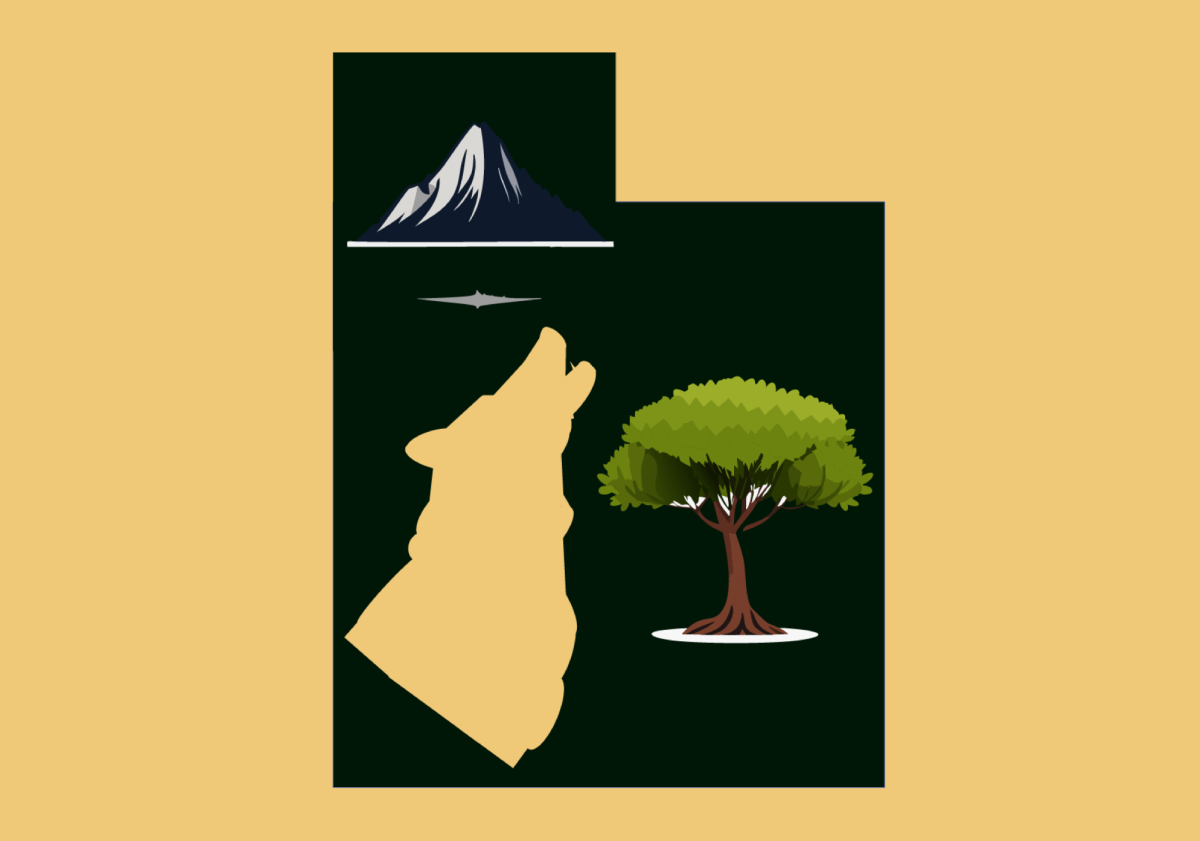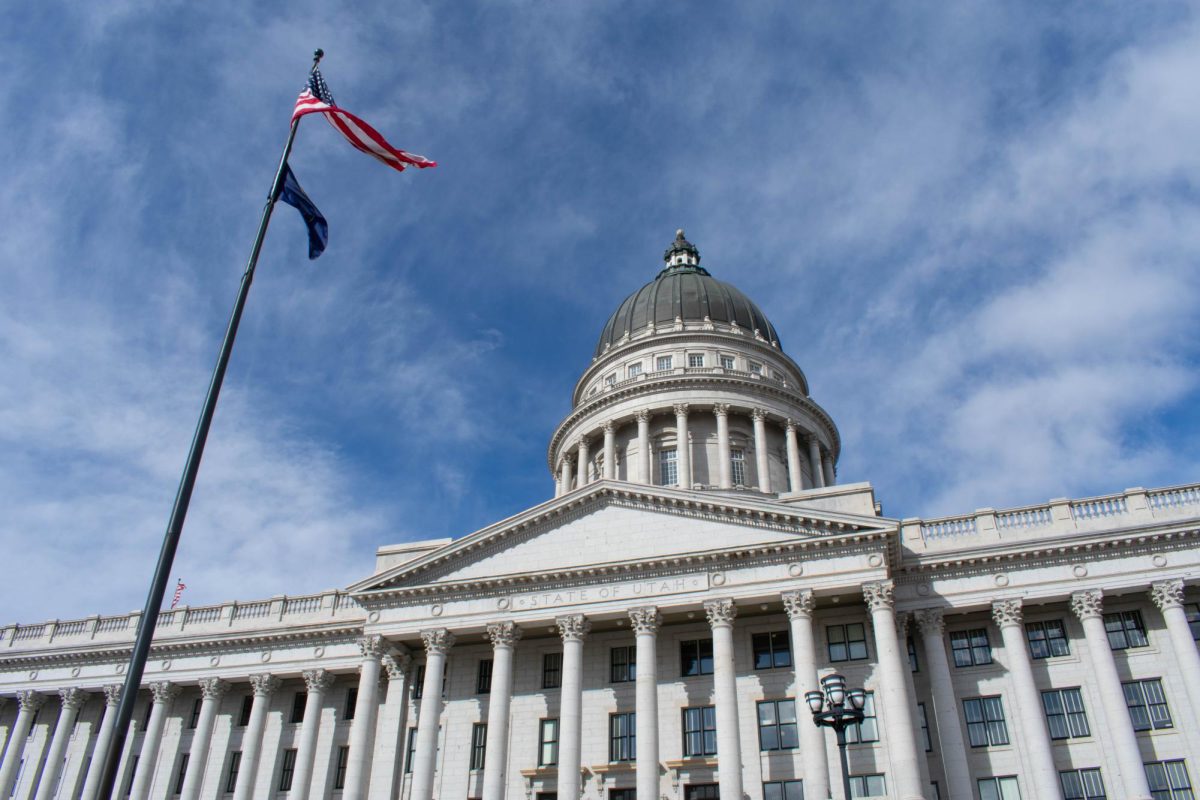On Dec. 4, eyes all across the nation were on Utah as Donald Trump arrived at the State Capitol. People waited anxiously for the President’s highly anticipated announcement regarding the Bears Ears National Monument in southern Utah.
To those like President Trump, the Obama-designated monument stands as a literal and metaphorical representation of government overreach and abuse of Federal power.
“Some people think that the natural resources of Utah should be controlled by a small handful of very distant bureaucrats located in Washington,” the president told the Utah crowd. “And guess what? They’re wrong.”
So, during his trip to Salt Lake City, Trump slashed the monument by two million acres or 85 percent. He also cut the Grand Staircase-Escalante National Monument, designated in 1996 by then-President Bill Clinton, to half its current size.
As if the announcement were not painful enough for the monument’s supporters, Fox 13’s Ben Winslow reported that the conveniently titled “You Can’t Always Get What You Want” by The Rolling Stones played after the executive orders were signed.
So who isn’t getting what they want?
Two days before President Trump’s visit, an estimated 5,000 protesters swarmed outside the Capitol holding signs with messages like “Sacred Places Just Like a Temple” and “A Monumental Mistake.”
Many who oppose the monument scale-back are environmentalists who are worried oil corporations and energy companies will destroy some of the country’s most memorable landscapes.
And these concerns are warranted. The Washington Post reported that Energy Fuels Resources, a Canadian-based uranium firm that owns the White Mesa Uranium Mill near Blanding, lobbied in favor of the monument shrinking.
In a letter to the U.S. Department of the Interior, Energy Fuels Chief Operating Officer Mark Calmers wrote that there are many “known uranium and vanadium deposits located within the [original Bears Ears boundaries] that could provide valuable energy and mineral resources in the future.”
Other opponents are scientists. Within the boundaries of the Grand Staircase Monument is the Kaiparowits Plateau, a fossil-rich area which houses thousands of fossils from the Late Cretaceous period. It is regarded as one of the richest paleontological areas in the world.
President of the Society of Vertebrate Paleontology, David Polly, told The Salt Lake Tribune he worries about oil and gas drilling in the region.
“If something like fracking was done, that will not only fragment the fossils along with the shale, it will also change geochemical signals in the rock,” Polly said.
Above all, it is Native Americans who are losing as a result of Trump’s misguided executive orders.
Currently, the Hopi, Navajo, Ute Indian, Ute Mountain Ute and Zuni tribes are suing the Trump administration for reducing the monument, arguing that the Bears Ears area has spiritual significance and hosts meaningful cultural artifacts. There are four other pending lawsuits against the Trump administration in light of the executive orders.
One of the broken up pieces of the Bears Ears monument will be renamed Shash Jaa, a term for Bears Ears in Navajo, according to Interior Secretary Ryan Zinke. However, the administration did not consult Native American tribes and groups, who did not agree to the name.
Gavin Noyes, executive director of Utah Dine Bikeyah, a Navajo group opposed to Trump’s decision, said there were reasons tribes wanted the monuments named in English.
“The tribes have all gotten together and they have designed themselves as a commission and chosen a name that works for everybody,” Noyes told The Salt Lake Tribune. “Even though every single tribe has a name for Bears Ears in their own language, the selection of the Navajo name tramples the Native American true history of the place.”
This is not the president’s first act of disrespect towards Indigenous communities. He approved the building of the Keystone Pipeline. In September 2016, Native American activists were attacked by security dogs as they protested the oil pipeline construction.
In the 1990s, Trump accused Native Americans opening tribal casinos of not being native.
“I might have more Indian blood than a lot of the so-called Indians that are trying to open up the reservations,” he said on a radio show.
Despite the President’s claims that his national monument reductions are meant to restore local power, his track record makes it clear that he is deeply antipathetic towards Native Americans.
President Obama’s establishment of Bears Ears did a lot towards mending the broken relationship between the Federal government and Native American tribes. Unfortunately, all that good was just as quickly undone.























wayne grosz • Dec 18, 2017 at 11:00 am
I was told that the native americans that are local want the reduction. The one who do not are from out of the area. The local tribes also want to use the resources at the area just like they have for decades.